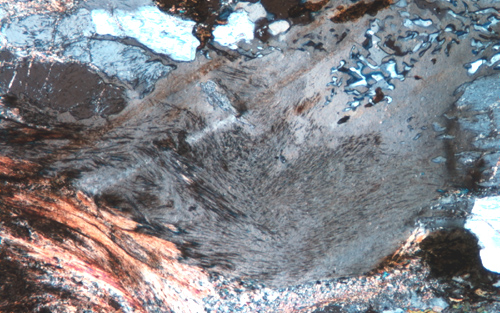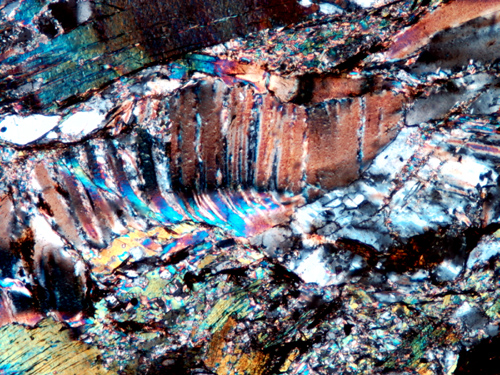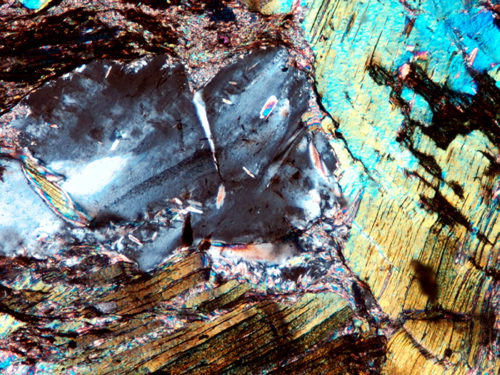| Muscovite. In the weakly deformed core of the Eldee
structure (sample ES1C), muscovite is generally very well-preserved,
undeformed large, approximately equant grains that include fibrolite
defining folds (Fig. 1), indicating a late growth of the muscovite in
relation to folds.
As deformation increases to the next level, Figs 2 and 3
(overprinted samples EC04_4 and EC04_3), large muscovite grains are
folded or cataclastically broken up into smaller grains. In the
transposed sample (Fig. 4, EC04_2), muscovite form long grains parallel
to the foliation.
All photomicrographs are 2mm across and the main foliation is oriented left to right. |
ORIGINAL Sample ES1C.  Figure 1a. Weakly deformed muscovite grain (2mm) with fibrolite inclusions defining folds. Notice vermicular quartz in muscovite (top right-hand-corner). |

Figure 1b. Line drawing on (a) to show the folded trends of the fibrolites. |
OVERPRINTED Sample Ec04_3.  Figure 2a. Crenulated muscovite grain starting to break up. Note on the upper part of the photomicrograph, the muscovite grain oriented east-west is only slightly bent. |

Figure 2b. Folded and broken grain of muscovite around a core of quartz. |
OVERPRINTED Sample Ec04_3 Figure 2c. Same sample as 2a and b. Cataclasite of micas preserving large clasts of muscovite grains (in the centre of the photo). |

Figure 4a.TRANSPOSED Sample Ec04_2. Fold developed as a result of the deformation which caused transposition. Muscovite has large aspect ratio and join biotite on the limbs. |